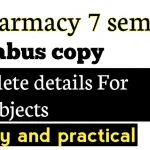B.Ed question papers are essential for teacher training aspirants. They provide insight into the exam pattern, marking scheme, and type of questions asked. This article covers various subjects in the B.Ed curriculum, offering 20 questions and answers for each subject. The goal is to simplify your preparation by providing comprehensive guidance.
B.Ed General English Questions and Answers
Question: What is the primary function of an adjective?
Answer: The primary function of an adjective is to describe or modify a noun or pronoun.
Question: Define a compound sentence with an example.
Answer: A compound sentence has two or more independent clauses joined by a conjunction. Example: She likes coffee, and he prefers tea.
Question: What is a synonym for the word “benevolent”?
Answer: A synonym for “benevolent” is “kind.”
Question: What are the three types of articles in English?
Answer: The three types of articles are definite (the), indefinite (a, an), and zero article (no article).
Question: What is a homonym? Provide an example.
Answer: A homonym is a word that has the same spelling or pronunciation as another but a different meaning. Example: Bark (tree bark/dog sound).
Question: Define a clause and give an example.
Answer: A clause is a group of words with a subject and predicate. Example: She is reading a book.
Question: What is the past participle of the verb “write”?
Answer: The past participle of “write” is “written.”
Question: Explain the term “direct speech” with an example.
Answer: Direct speech quotes someone’s exact words. Example: She said, “I am happy.”
Question: What is the difference between “few” and “a few”?
Answer: “Few” means hardly any, while “a few” means some but not many.
Question: Define the term “conjunction” and give an example.
Answer: A conjunction is a word that joins words, phrases, or clauses. Example: and, but, or.
Question: What is the passive voice of “She writes a letter”?
Answer: The passive voice is “A letter is written by her.”
Question: What is the difference between “who” and “whom”?
Answer: “Who” is used as a subject, while “whom” is used as an object.
Question: What is the function of a preposition?
Answer: A preposition shows the relationship between its object and another word in the sentence.
Question: Define an interrogative sentence.
Answer: An interrogative sentence asks a question.
Question: What is the plural of “child”?
Answer: The plural of “child” is “children.”
Question: What is a synonym for “happy”?
Answer: A synonym for “happy” is “joyful.”
Question: Give an example of a proper noun.
Answer: An example of a proper noun is “India.”
Question: What is the difference between “accept” and “except”?
Answer: “Accept” means to agree to, while “except” means excluding.
Question: Define an imperative sentence.
Answer: An imperative sentence gives a command or request.
Question: What is the past tense of the verb “run”?
Answer: The past tense of “run” is “ran.”
B.Ed General Science Questions and Answers
Question: What is the chemical formula of water?
Answer: The chemical formula of water is H₂O.
Question: Define photosynthesis.
Answer: Photosynthesis is the process by which plants make food using sunlight, water, and carbon dioxide.
Question: What is the unit of force in the SI system?
Answer: The unit of force in the SI system is the Newton (N).
Question: What are the three states of matter?
Answer: The three states of matter are solid, liquid, and gas.
Question: What is the function of the heart in the human body?
Answer: The heart pumps blood throughout the body.
Question: What is the main component of the sun?
Answer: The main component of the sun is hydrogen.
Question: Define the term “evaporation.”
Answer: Evaporation is the process where liquid changes into vapor.
Question: What is the formula for calculating speed?
Answer: The formula for speed is distance divided by time.
Question: What is the pH of pure water?
Answer: The pH of pure water is 7.
Question: Name the gas essential for respiration.
Answer: The gas essential for respiration is oxygen.
Question: What is Newton’s first law of motion?
Answer: Newton’s first law states that an object will remain at rest or in uniform motion unless acted upon by an external force.
Question: What is the function of chlorophyll in plants?
Answer: Chlorophyll helps plants absorb sunlight for photosynthesis.
Question: What is the boiling point of water at sea level?
Answer: The boiling point of water at sea level is 100°C.
Question: What is the atomic number of carbon?
Answer: The atomic number of carbon is 6.
Question: What is a habitat?
Answer: A habitat is the natural environment where an organism lives.
Question: Define the term “acid.”
Answer: An acid is a substance that releases hydrogen ions in a solution.
Question: What is the largest organ in the human body?
Answer: The largest organ in the human body is the skin.
Question: What is the function of the kidneys?
Answer: The kidneys filter waste from the blood.
Question: What is the main source of energy on Earth?
Answer: The main source of energy on Earth is the sun.
Question: What is the difference between mass and weight?
Answer: Mass is the amount of matter in an object, while weight is the force exerted by gravity on that object.
Studying B.Ed question papers can enhance preparation by covering various subjects with relevant questions and answers. These comprehensive resources provide clarity, enabling effective exam readiness. Utilize these questions and answers to strengthen your understanding of key topics and excel in your exams confidently.
Latest Posts
- Step-by-step guide to download and apply for jee mains admit card 202
- Comprehensive 2025 government holidays and recruitment details for job seekers
- JEE Mains Admit Card 2025: Your Step-by-Step Guide to Downloading the Hall Ticket
- Everything You Need to Know About 2025 Government Holidays Recruitment
- Comprehensive Guide to rrb d group recruitment 2025 – Eligibility, Vacancies, and Application
- Detailed guide to nps trust recruitment 2025 vacancies, eligibility and apply process
- Comprehensive guide to hpcl recruitment 2025 notification, vacancies, and application process
- ignou bed admission 2025 complete recruitment guide with eligibility and process
- Comprehensive Guide to Indian Army Agniveer Recruitment 2025 Notification and Jobs
- Everything You Must Know About CBSE Board Exams 2025 Changes & New Rules






